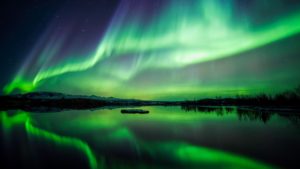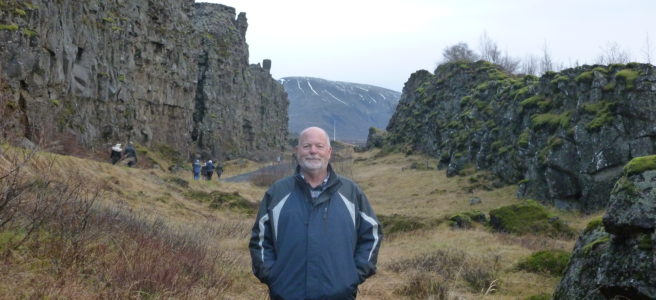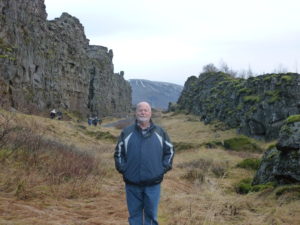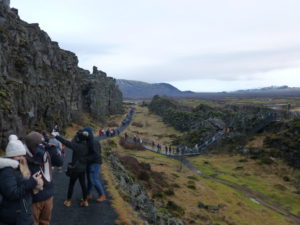
Remember your first date as a teenager? When you finally got to go out in a car rather than be driven somewhere by your parents? The excitement? The anticipation? The possibilities…(maybe more a guy thing)? You picked up your date, probably went out for a bite to eat, maybe a movie. Then, trying to act as cool as possible, a little drive. You found a nice, secluded country road with a pull-off and sat, supposedly, to gaze at the stars but secretly hoping to get lucky. The windows would fog up from all the “talking” and occasionally you’d have to start the engine and run the heater…
That’s exactly what looking for the Northern Lights was like…kinda. Thwarted by unfavorable weather all week long, our Northern Lights tour was cancelled (no refunds by the way…what a racket). We had arrived on Monday, our tour was to have been Wednesday evening but by Thursday it was still overcast with occasional rain. Major bummer. We didn’t despair because Iceland has a charm of its own and we were enjoying exploring the island nation and it’s many attractions (the friendly people, hot springs, geysers, volcanoes, geologic marvels, the food, beautiful scenery, elves, etc.).
The Icelandic Meteorological Office produces an Aurora Forecast each day indicating when conditions might be best to see the Northern Lights. We followed their website like two children gazing at penny candy in the display case at the corner store. Finally, Friday night was predicted to be clear. We planned a nice dinner, complete with a few shots of Iceland’s “Black Death,” (Brennivin) to keep us warm, and then set off in the rental car to a deserted stretch of Icelandic highway.
We found a little pull-off area that would get us away from passing traffic and the glare from oncoming headlights, and like two teenagers, we sat gazing at the stars. We gazed… and gazed ….and gazed some more. We talked. We fogged up the windows, started the car and ran the heater. It’s cold in Iceland at night.
The stars were spectacular. Without any ambient light from the city to obscure them, the stars seemed like, as George H.W. Bush once famously said, “…a thousand points of light.” Being at such a high latitude (66 degrees north) and only about 160 miles from the Arctic Circle, the North Star (Polaris) was almost directly overhead–seemed a little weird. Ironically, to see the Northern Lights we actually had to face toward the south.
But alas, no Northern Lights appeared. As it turns out, not only must the sky be reasonably clear but the solar activity must also be just right. The quest to see the aurora borealis was a bust. On the plus side, I got to spend a few hours fogging up the windows with my sweetie gazing at the stars like two teenagers…



